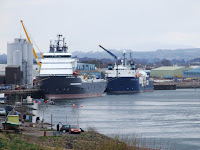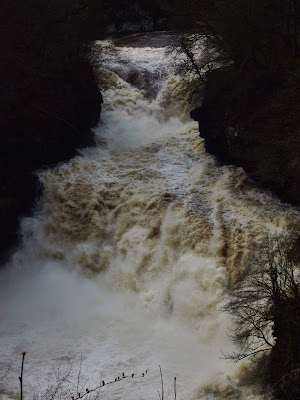
Adrian Warnock is best known as the writer of the outspoken blog, adrianwarnock.com, which at one time had a very lively comments section, is very widely read, and has been credited with bringing many of the voices of the so-called 'young, restless and reformed' movement to a UK readership, and blending it with the 'charismatic' practices of his New Frontiers churchmanship.
In this his first book Warnock seeks to rivet the readers attention on the resurrection of Jesus Christ. The cross of Christ and his death has been the traditional emphasis of the western church, both in positive remembrance, and over the last few years, deeply-felt theological wrangles over its meaning to which Warnock has been no stranger. In this book though he seeks to move our attention onto the positive Christian declaration that Christ who died, rose again and now reigns. He demonstrates that while the resurrection was absolutely central to the life, witness and proclamation of the first Christians - it is often merely assumed by today's church. The central prominence of this theme in the New Testament is simply not reflected in contemporary preaching, praying, publishing, faith, hope or Christian practice! He has a good point and he makes it well.
Secondly, and drawing on the work of scholars like N.T. Wright, he coherently marshals some of the apologetic arguments that insist that it is historically sound to argue for the historicity of the resurrection - and that this was not in the form of an apparition, but of genuine bodily resurrection. This again is pretty well put together, defining the heart of Christian belief, and the reasons for holding it - with clarity and without unnecessary theological terminology.
Thirdly Warnock looks at the bigger picture of the biblical view of post-mortem resurrection, how the doctrine emerged during the Old Testament period, and existed at the time of Christ - where the matter was much disputed between Pharisees and Saducees. This section was less strong, in being a little selective in the texts covered, presenting the Old Testament in more systematic terms than it is written.
Warnock's fourth emphasis though is probably the most helpful part of the book -in that he shows that the resurrection of Christ is part of the gospel, often left unproclaimed - even in presentation in visitor-services and the like, aimed at explaining the core of the faith to interested people. The NT, Warnock points out says that "Christ was raised for our justification". Quoting Calvin who said, "For how could he by dying have freed us from death, if he had yielded to its power?" Warnock points out that without the life-giving power of the risen Christ, his death alone could have made us 'forgiven corpses'! Extending his theme, he develops the view that Christian conversion is a personal resurrection, which comes from being united with Christ and participating in his resurrection. These two chapters are worth the price of the book alone and will repay careful reading.
The final two sections deal with (i) the Christian life and (ii) the return of Christ. The Christian life section, in which matters such as sanctification, bible-study, prayer and revival are dissected was the weakest in the book however. This was not because of any great errors that are contained within them - more simply that Warnock seems at times to address these subjects without tying them adequately to his main resurrection theme. Ironically he seems occasionally in this section to somewhat merely assume the resurrection! While each of his topics is opened up with his customary clarity and accuracy, without clearly anchoring them in his resurrection theme, they appear to be a list of personal spiritual priorities rather than the inescapable and inevitable implications of the resurrection. Developing Lloyd-Jones' pneumatology might be a very worthwhile thing to do - but might be better done in a book on the work of the Spirit, or a commentary on Ephesians. The opposite of this weakness is the method employed by NT Wright whose "Surprised by Hope" seeks to tie the emphases of the Christian life very specifically to his understanding of Christ's resurrection, especially its physicality.
Finally Warnock ends on a high note. Expounding the last New Testament saying of the risen Christ he looks at the Great Commission and the church's mission to tell the whole world about him. Then he looks at the great hope of Christian salvation which is not a disembodied spirit-only (float about on a cloud!) but of complete personal and physical resurrection like Christ's. Finally he concludes with a brief chapter on the future hope of the resurrection of the whole cosmos, the judgement of God, and the renewal of all things.
This year "Raised with Christ" was my Easter reading - and its a thought-provoking and stimulating read which has had a significant effect in re-balancing my understanding of the gospel towards the New Testament pattern. His understanding of the gospel in the light of the death and resurrection of Christ is great. The book is written in deceptively simple language, grappling as it is with some very serious things. A British author consistently using American spellings does grate after a while, but I tried not to let this annoy me too much! In this review I have noted that the book is not of uniform quality throughout, some chapters sparkling - while material selection in other parts seemed a little arbitrary - and I do think that some of the high-profile rave reviews over-state their case somewhat. Nevertheless this has been a really useful Easter read, and at raisedwithchrist.net, there is the promise of study-materials to follow which might make it a basis for a small-group Bible-study next year.






































